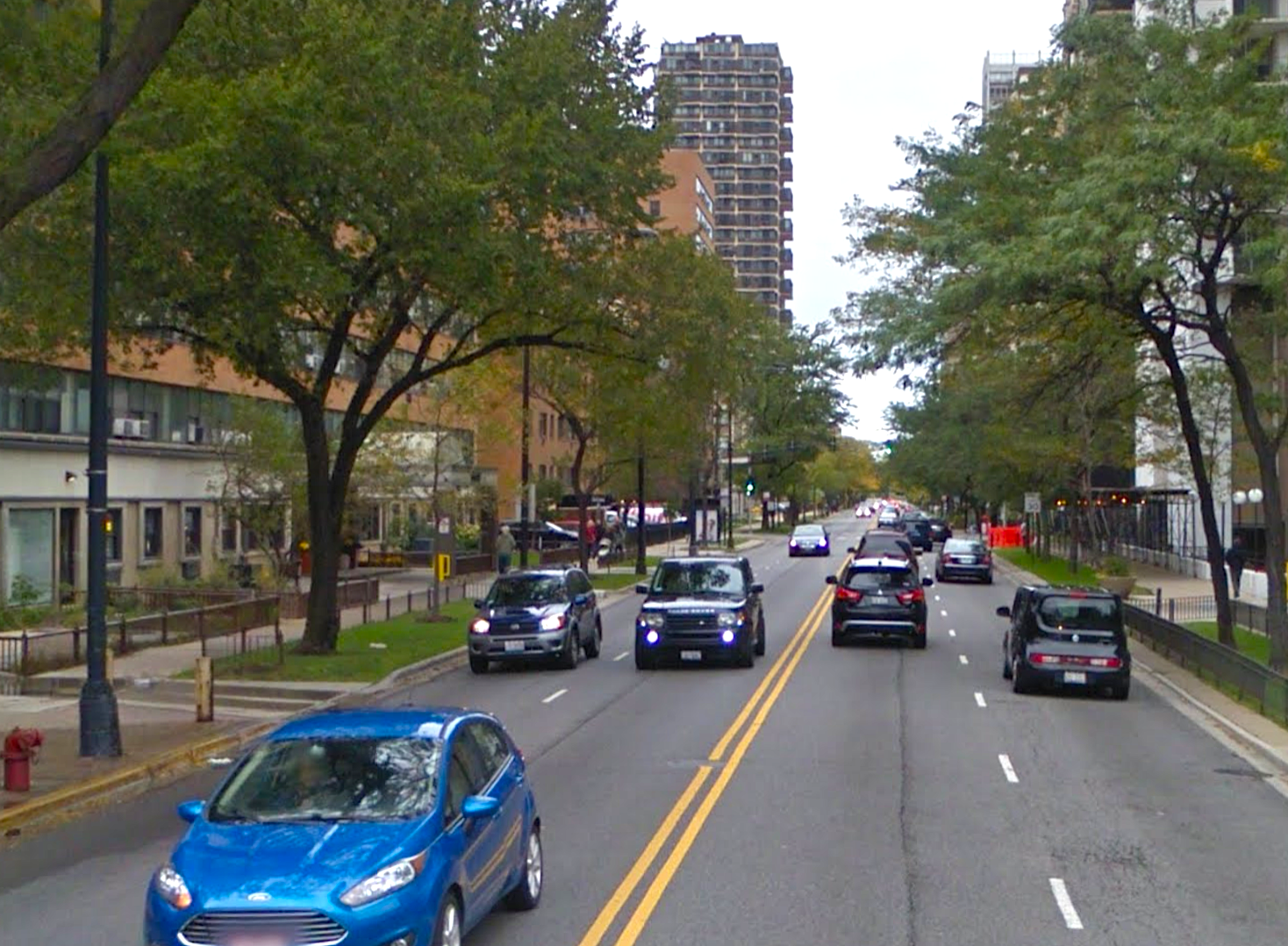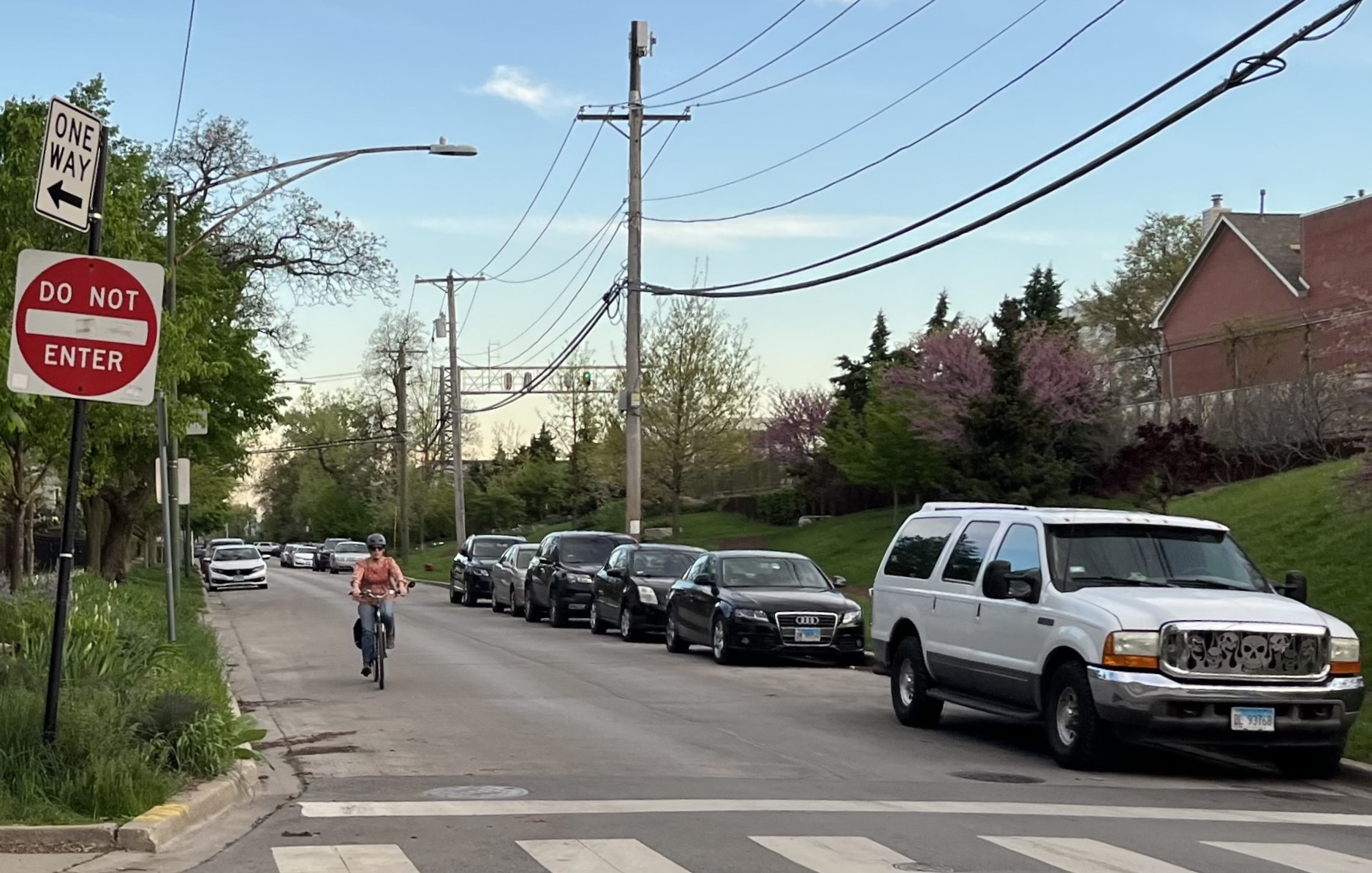When I first started looking for apartments on the Far North Side of Chicago, I vowed I'd never live on or near Sheridan Road, a four-lane traffic sewer that's basically an extension of Lake Shore Drive. I once cat sat for someone who lived on Sheridan in Edgewater and happened to stop by during rush hour. The apartment was on a lower level of the building overlooking the roadway. Traffic was audible throughout my visit. I often wonder if folks who live in the high-rises along Sheridan wish for a low-car future like I do.
Last week the Carmen Winona Neighborhood Block Club tweeted out an update from 48th Ward alderman Harry Osterman about repaving projects in the ward. One of the streets slated for resurfacing this summer is Sheridan between Bryn Mawr and Winthrop Avenue (at Devon Avenue) near Loyola University. The block club added that they’d like to see bike lanes on this stretch of Sheridan.
Bike lanes along Sheridan are a nice idea. Making room for them would require repurposing existing travel and/or parking lanes.
But I think we’d be doing a huge disservice to the tens of thousands of people who use the #151 Sheridan, #147 Outer Drive Express, and #136 Sheridan/LaSalle express buses along this corridor if we don't prioritize creating bus-only lanes. There are already painted bike lanes along Winthrop and Kenmore avenue, quiet one-way residential north-south streets that run one or two blocks west of Sheridan. While more could be done to improve the comfort of cycling in Edgewater, it’s usually not difficult to detour around the occasional car parked or standing in the bike lanes on Winthrop or Kenmore.
I often tout the benefit of being on your own timetable as one of the perks of biking for transportation. But there are plenty of people who don’t ride bikes for a variety of valid reasons and instead rely on transit. That, along with the fact that there are nearby parallel bike routes, convinces me that if we're going to convert lanes on Sheridan to make room for sustainable transportation, bus lanes are the most pressing need.
I’ve long believed that if we prioritized buses along our most trafficked routes, we will see a shift in people’s travel choices. While decision-makers often view mildly inconveniencing drivers by earmarking more road space for greener modes as a political nonstarter, it's crucial that we change our priorities. Even if we weren’t looking down the barrel of catastrophic climate change, it makes more sense to prioritize the most space- and energy-efficient transportation modes. If you’re reading this article you’re likely familiar with this widely shared image showing how much space is necessary to move 60 people by cars, bikes, and a bus.
![aOdBfqmjhOATEAiTTBlfUUCExSMvUJ49ShfUEhVDg-4]()
The city of Chicago has jurisdiction over the stretch of Sheridan from Bryn Mawr to Winthrop. In order for bus lanes and transit signal priority (traffic signals that programmed to help buses from getting caught at reds) to be truly transformative for the Edgewater-Rogers Park area, we need these features on Sheridan from Foster to Howard avenue. This would mean taking on the Illinois Department of Transportation and their historically drivers-first bias. But the payoff – more people using transit, less congestion, and lower noise and air pollution levels – is worth the fight.





